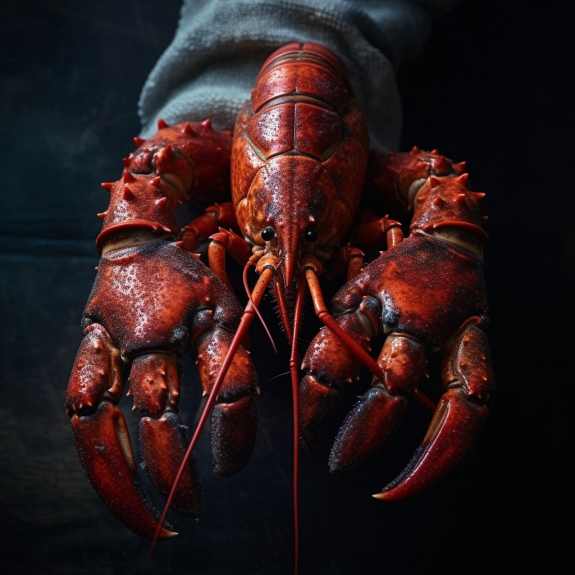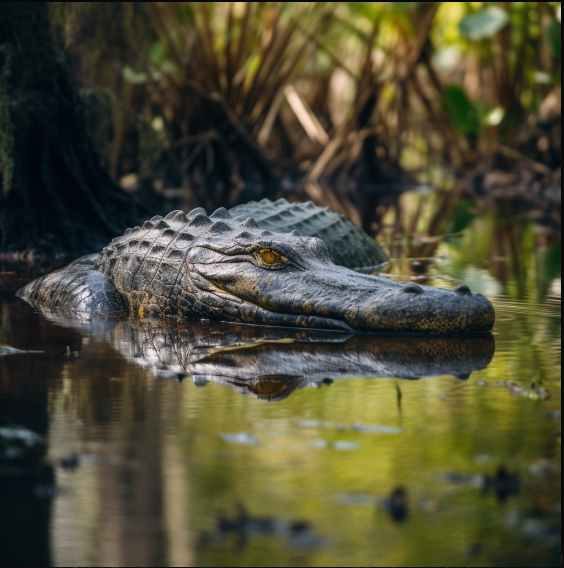Do Florida Lobsters Have Claws? The Florida lobster
Florida is renowned for its stunning coastal waters, and one of its underwater inhabitants that often piques curiosity is the Florida lobster. Many people wonder, “Do Florida lobsters have claws?”
As someone who’s been captivated by these sea creatures, I’m excited to provide you with an in-depth exploration of this topic. So, let’s don our virtual scuba gear and plunge into the depths of the Florida lobster world.
No, Florida spiny lobsters do not have claws, but have spines on their exoskeleton and antennae for protection.
What Sets Florida Lobsters Apart?

Florida lobsters belong to the spiny lobster family, and they are distinguishable from their clawed counterparts, such as the Maine lobster. The first key fact to note is that Florida lobsters do not have the large, imposing claws that you often see in lobster images.
See More: Do I Have to Return My License Plate in Florida?
They may have small, delicate structures, but these are not used for the same purposes as claws in other lobster species.
One might wonder why Florida lobsters have these prominent spines on their bodies. These spines are a defense mechanism, protecting them from predators. So, in essence, the Florida lobster’s spines act as armor, helping them survive in their coastal habitat.
The Evolutionary Tale of Clawless Florida Lobsters
We need to delve into their evolutionary history to understand why Florida lobsters lack claws. Unlike clawed lobsters that belong to the Nephropidae family, Florida lobsters are part of the Palinuridae family.
This lineage traces back to a common ancestor that had no claws, and this characteristic has been preserved over millions of years of evolution.
Specialization for Survival
The absence of claws in Florida lobsters is a testament to their adaptation for survival in the rocky crevices and coral reefs that they call home. In these confined spaces, claws could be a hindrance, making it challenging to maneuver and evade predators.
Instead, Florida lobsters have developed strong, spiky antennae that allow them to navigate their complex habitats efficiently.
The Florida Lobster’s Unique Appendages
Florida lobsters use their antennae for a variety of tasks. These long, segmented structures serve as their primary sensory organs, helping them detect changes in water currents, temperature, and even the chemical signals of other lobsters.
Additionally, they use their antennae to gather information about their surroundings and locate food.
In the absence of claws, Florida lobsters have adapted their legs for feeding. Their front legs are elongated and have specialized projections that aid in grasping and manipulating food.
These modified legs serve as effective tools for acquiring and consuming their preferred diet of small marine creatures, such as crabs, clams, and snails.
Do Florida Lobsters Have Claws?

Florida lobsters, also known as spiny lobsters, are a type of crustacean that is native to the warm waters of the Atlantic Ocean. They are a popular seafood delicacy, and they are known for their sweet and delicate flavor.
Read Also: Which State is Closest to Florida?
So, do Florida lobsters have claws? No, Florida lobsters do not have claws. Instead, they have long, thick antennae that they use for defense, hunting, and communication. Their antennae are also covered in spines, which helps to protect them from predators.
Why Don’t Florida Lobsters Have Claws?
There are a few reasons why Florida lobsters do not have claws. First, they live in warm waters, where there is less competition for food. Claws are used for capturing prey, and Florida lobsters do not need them to survive.
Second, Florida lobsters are more solitary creatures than other types of lobsters. They do not need claws to fight for territory or mates.
Finally, Florida lobsters have a different type of defense mechanism than other types of lobsters. They use their antennae to make a screeching noise that scares away predators.
Related Post: How Common Are Alligators in Florida?
What Do Florida Lobsters Use Instead of Claws?
Florida lobsters use their antennae for a variety of tasks, including:
- Defense: They use their antennae to make a screeching noise that scares away predators.
- Hunting: They use their antennae to sense their surroundings and to find food.
- Communication: They use their antennae to communicate with other lobsters.
Mating and Reproduction in Clawless Florida Lobsters

During the breeding season, male and female Florida lobsters engage in an intricate courtship dance. The male uses his specialized front legs to grasp the female’s carapace gently. This courtship ritual allows for successful mating, and it’s a fascinating display of nature’s adaptations.
After successful mating, the female carries the fertilized eggs beneath her abdomen. This protective behavior ensures the survival of the next generation. The absence of claws in the female contributes to her ability to safeguard the eggs, as claws might risk damaging them.
Conservation Efforts and Regulations
Florida lobsters are a valuable part of the state’s marine ecosystem, and their populations need protection. Regulations, such as size limits and seasonal harvest restrictions, help ensure the sustainability of these intriguing creatures.
When catching Florida lobsters, it’s crucial to follow responsible harvesting practices. Avoiding harm to the lobster population, including the egg-bearing females, is vital for preserving their numbers for future generations.
Conclusion
The mystery of whether Florida lobsters have claws has been unravelled. These remarkable creatures have adapted to their unique environment by forgoing traditional claws and evolving spiny defences and specialized appendages.
As I’ve shared this journey with you, I hope you’ve gained a newfound appreciation for the intricacies of the underwater world and the fascinating adaptations of Florida lobsters. Whether you’re an avid seafood lover, understanding these remarkable creatures adds another layer of wonder to our appreciation of Florida’s coastal waters.






